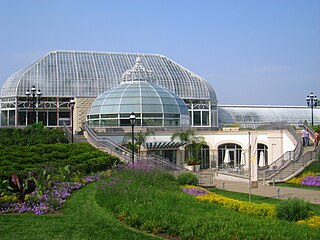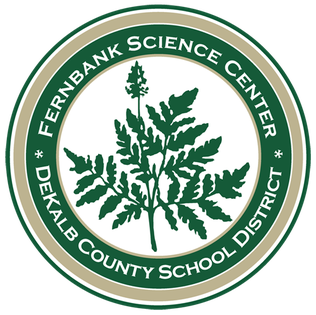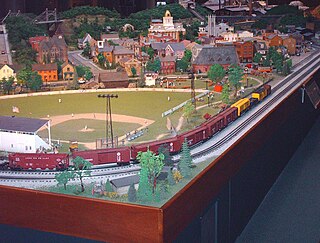
Pittsburgh is a city in the Commonwealth of Pennsylvania and the county seat of Allegheny County. It is the second-most populous city in Pennsylvania after Philadelphia and the 68th-most populous city in the U.S., with a population of 302,971 as of the 2020 census. The city anchors the Pittsburgh metropolitan area of Western Pennsylvania. Its population of 2.457 million is the largest in both the Ohio Valley and Appalachia, the second-largest in Pennsylvania, the 7th-largest in the Mid-Atlantic region and the 26th-largest in the U.S. Pittsburgh is the principal city of the greater Pittsburgh–Weirton–Steubenville combined statistical area which includes parts of Ohio and West Virginia.

The Nomad rover is an uncrewed vehicle designed as a test for such a vehicle to ride on other planets.
The Oregon Museum of Science and Industry is a science and technology museum in Portland, Oregon, United States. It contains three auditoriums, including a large-screen theatre, planetarium, and exhibition halls with a variety of hands-on permanent exhibits focused on natural sciences, industry, and technology. Transient exhibits span a wider range of disciplines.

The Robot Hall of Fame, established by Carnegie Mellon University in 2003, honors significant robots in science, society, and technology. The organization was established in 2003 by the School of Computer Science at Carnegie Mellon University in Pittsburgh, Pennsylvania, as an acknowledgement of Pittsburgh's achievements in the field of robotics and with the aim of creating a broader awareness of the contributions of robotics in society. The idea for the Robot Hall of Fame was conceived by Carnegie Mellon School of Computer Science dean James H. Morris, who described it as a means of honoring "robots that have served an actual or potentially useful function and demonstrated real skill, along with robots that entertain and those that have achieved worldwide fame in the context of fiction." The first induction ceremony was held at the Kamin Science Center on November 10, 2003. 34 robots – both real and fictional – have been inducted into the Robot Hall of Fame since its inception. An exhibit named Roboworld was present at the Kamin Science Center from June 2009 until June 2022, featuring a physical embodiment of the hall of fame. Now some of them may be found in the lobby of Rangos Giant Cinema.

The Fernbank Science Center is a museum, classroom, and woodland complex located in Atlanta. It is owned and operated by the DeKalb County School District, which announced in May 2012 it was considering closing the facility to cut its annual budget, then quickly shelved the plan after public outcry. The nearby Fernbank Museum of Natural History is a private non-profit organization that is separate from the Science Center.

The Museum of Science (MoS) is a nature and science museum and indoor zoological establishment located in Science Park, a plot of land in Boston and Cambridge, Massachusetts, spanning the Charles River. Along with over 700 interactive exhibits, the museum features a number of live and interactive presentations throughout the building each day, along with scheduled film showings at the Charles Hayden Planetarium and the Mugar Omni Theater. Additionally, the Museum of Science is an accredited member of the Association of Zoos and Aquariums (AZA), being home to over 100 animals, many of which the museum gained after they were surrendered, confiscated, rescued or rehabilitated.

The Carnegie Museum of Art is an art museum in the Oakland neighborhood of Pittsburgh, Pennsylvania. The museum was originally known as the Department of Fine Arts, Carnegie Institute and was formerly located at what is now the Main Branch of the Carnegie Library of Pittsburgh. The museum's first gallery was opened for public use on November 5, 1895. Over the years, the gallery vastly increased in size, with a new building on Forbes Avenue built in 1907. In 1963, the name was officially changed to Museum of Art, Carnegie Institute. The size of the gallery has tripled over time, and it was officially renamed in 1986 to "Carnegie Museum of Art" to indicate it clearly as one of the four Carnegie Museums.

Carnegie Museums of Pittsburgh is a nonprofit organization that operates four museums in Pittsburgh, Pennsylvania, United States. The organization is headquartered in the Carnegie Institute and Library complex in the Oakland neighborhood of Pittsburgh. The Carnegie Institute complex, which includes the original museum, recital hall, and library, was added to the National Register of Historic Places on March 30, 1979.
An entertainment robot is, as the name indicates, a robot that is not made for utilitarian use, as in production or domestic services, but for the sole subjective pleasure of the human. It serves, usually the owner or his housemates, guests, or clients. Robotic technologies are applied in many areas of culture and entertainment.
Star Wars: Where Science Meets Imagination was a traveling exhibition created by the Museum of Science, Boston, featuring props and costumes used in the Star Wars films, and focusing primarily on the science behind George Lucas' science fiction epic. The exhibition was developed by Boston's Museum of Science in collaboration with Lucasfilm Ltd., with the support of the National Science Foundation, under Grant No. 0307875. The exhibit was presented nationally by Bose Corporation.

Allegheny Center is a neighborhood on Pittsburgh's North Side. Its zip code is 15212, and it has representation on Pittsburgh City Council by both council members for District 6 and District 1 (Northside).

The Houston Museum of Natural Science is a natural history museum located on the northern border of Hermann Park in Houston, Texas, United States. The museum was established in 1909 by the Houston Museum and Scientific Society, an organization whose goals were to provide a free institution for the people of Houston focusing on education and science. The museum complex consists of a central facility with four floors of natural science halls and exhibits, the Burke Baker Planetarium, the Cockrell Butterfly Center, and the Wortham Giant Screen Theatre. In 2022, the museum received 1,520,000 visitors, making it seventh on the List of most-visited museums in the United States, and was the third most-visited U.S. science museum. Much of the museum's popularity is attributed to its large number of special or guest exhibits.

The Miniature Railroad & Village (MRRV) is a large and detailed model train layouts diorama of western Pennsylvania from 1880 to 1930. It is a long-running display currently located in the Kamin Science Center in Pittsburgh, Pennsylvania, the MRRV has been a Pittsburgh tradition for over 50 years.
Robert C. Wilburn is the director of Carnegie Mellon University Heinz College's Washington, DC campus as well as a Distinguished Service Professor at the college. Prior to this position he was the first president and Chief Executive Officer of the Gettysburg Foundation. He served as president and CEO of the Carnegie Institute in Pittsburgh and as president of Colonial Williamsburg Foundation. Under his leadership, the number of customers, members, donors, and volunteers increased sharply within each organization. The merger of the Buhl Science Center with the Carnegie Institute and the construction of a new $40 million Kamin Science Center are among his notable accomplishments. While at the Carnegie Institute, Wilburn also contributed to the founding of the Andy Warhol Museum by negotiating gifts of more than a thousand paintings and drawings from the Warhol and DIA Foundations and by raising funds to secure and renovate a historic, seven-story building in downtown Pittsburgh. The Warhol Museum is probably the largest museum in the world dedicated to a single artist and may have been the largest gift ever given to a museum at one time, in value.

The Children's Museum of Pittsburgh is a hands-on interactive children's museum in Pittsburgh, Pennsylvania. It is in the Allegheny Center neighborhood in Pittsburgh's Northside.

Copernicus Science Centre is a science museum standing on the bank of the Vistula River in Warsaw, Poland. It contains over 450 interactive exhibits that enable visitors to single-handedly carry out experiments and discover the laws of science for themselves. The centre is the largest institution of its type in Poland and one of the most advanced in Europe. In 2018, since its opening, it has been visited by over 8 million people.
Seddon Leonard Bennington was a New Zealand museum executive. Bennington was the chief executive of the Museum of New Zealand Te Papa Tongarewa, the national museum of New Zealand, from January 2003 until his death in 2009, and had also been the director of the Carnegie Science Center in Pittsburgh, Pennsylvania, from 1994 until 2002.
ThePartnership in Education is a non-profit multidisciplinary health literacy and informal science education project based at Duquesne University in Pittsburgh, Pennsylvania. The Partnership in Education produces planetarium shows and other multimedia that focus on topics in health and biology.

The Buhl Planetarium and Institute of Popular Science Building, also known as the "People's Observatory", is located at 10 Children's Way in the Allegheny Center neighborhood of Pittsburgh, Pennsylvania.
The National Guitar Museum (NGM) is a museum dedicated to the guitar's history, evolution, and cultural impact; and to promoting and preserving the guitar's legacy. The NGM addresses the history of the guitar as it has evolved from ancient stringed instruments to the wide variety of instruments created over the past 200 years. It focuses on the guitar's inventors, innovators, and influential players, along with the science and technology behind the guitar's construction, shape, and sound.
















